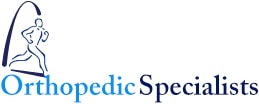Joint Replacement
Acromioclavicular Joint Reconstruction Rehab Protocol
Definition: The acromioclavicular (AC) joint is the articulation between the scapula and the clavicle. An AC joint separation or dislocation occurs when the restraints that normally secure this joint are traumatically ruptured. Reconstruction of the AC joint stabilizes this important joint by utilizing multiple new restraints established surgically.
Phase 1: Immobilization Phase (0-6 weeks)
Goals:
- Allow healing of soft tissue
- Early-protected ROM
- Retard muscle atrophy
- Decrease pain and inflammation
Precautions:
- Ultra sling for 6 weeks total
- Arm must never be unsupported when patient is in upright position for first 6 weeks
- The weight of arm and scapula places tremendous static forces on the ligament reconstruction
- For the first 2 weeks patient may remove sling only for hygiene
- At 2 weeks, the patient may additionally remove sling daily in order to perform the following exercises:
Exercises:
- PROM with patient supine
- Gradual increase in flexion and abduction in the scapular plane; limit flexion to 70 degrees for the first 4 weeks; then, increase as tolerated
- No restrictions on glenohumeral internal and external rotation
- Restrict glenohumeral extension, because extension causes the largest amount of stress on the reconstructed ligament
- Very gentle mobilizations and manual stretching by therapist
- Begin deltoid and rotator cuff isometric exercises in week 4
Phase 2: Intermediate Phase (7-12 weeks)
Minimal pain and inflammation
Goals:
- Gradual increase in ROM
- Improved strength
- Decrease pain and inflammation
Precautions:
- Sling may be discontinued
Exercises:
- Continue deltoid and rotator cuff isometric exercises
- AAROM progression (weeks 7 and 8)
- AROM progression (weeks 9 to 12)
- Glenohumeral extension is unrestricted after week 10
- Full ROM (including extension) should be achieved by week 12
- Continue to avoid contact activities
Phase 3: Strengthening Phase (12 to 18 weeks)
Minimal pain, nearly complete ROM
Goals:
- Normalize ROM
- Improve strength
- Improve neuromuscular control
- Normalize arthrokinematics
Exercises:
- Start resisted glenohumeral and scapular exercises with light weights
- Emphasis should be placed on strengthening the scapular stabilizers
- Graduate strengthening activities as tolerated
- No pressing activities or lifting from the floor, such as a dead lift
- Continue to avoid contact activities
Phase 4: Return to Activity Phase (4 ½ months)
Full painless ROM, muscle strength that fulfills work and sports requirements
Exercises:
- Progress previous strengthening program, continue to increase weight resistance with isotonics
- Add total body conditioning, including strength and endurance training if appropriate (athlete or required by patient’s job)
- Initiate sport/work specific drills or activities
- Initiate appropriate interval throwing, pitching, tennis, and golf program as appropriate
- Power athletes may require 6-9 months to return to peak strength
- Return to sport, work, and prior activity level unrestricted based on physician approval and completion of rehab
Red Flags:
OK to have mild discomfort with exercises, but if it persists over one hour, the intensity of the exercises must be decreased
If there is an increase in night pain, the program must be altered to decrease intensity
